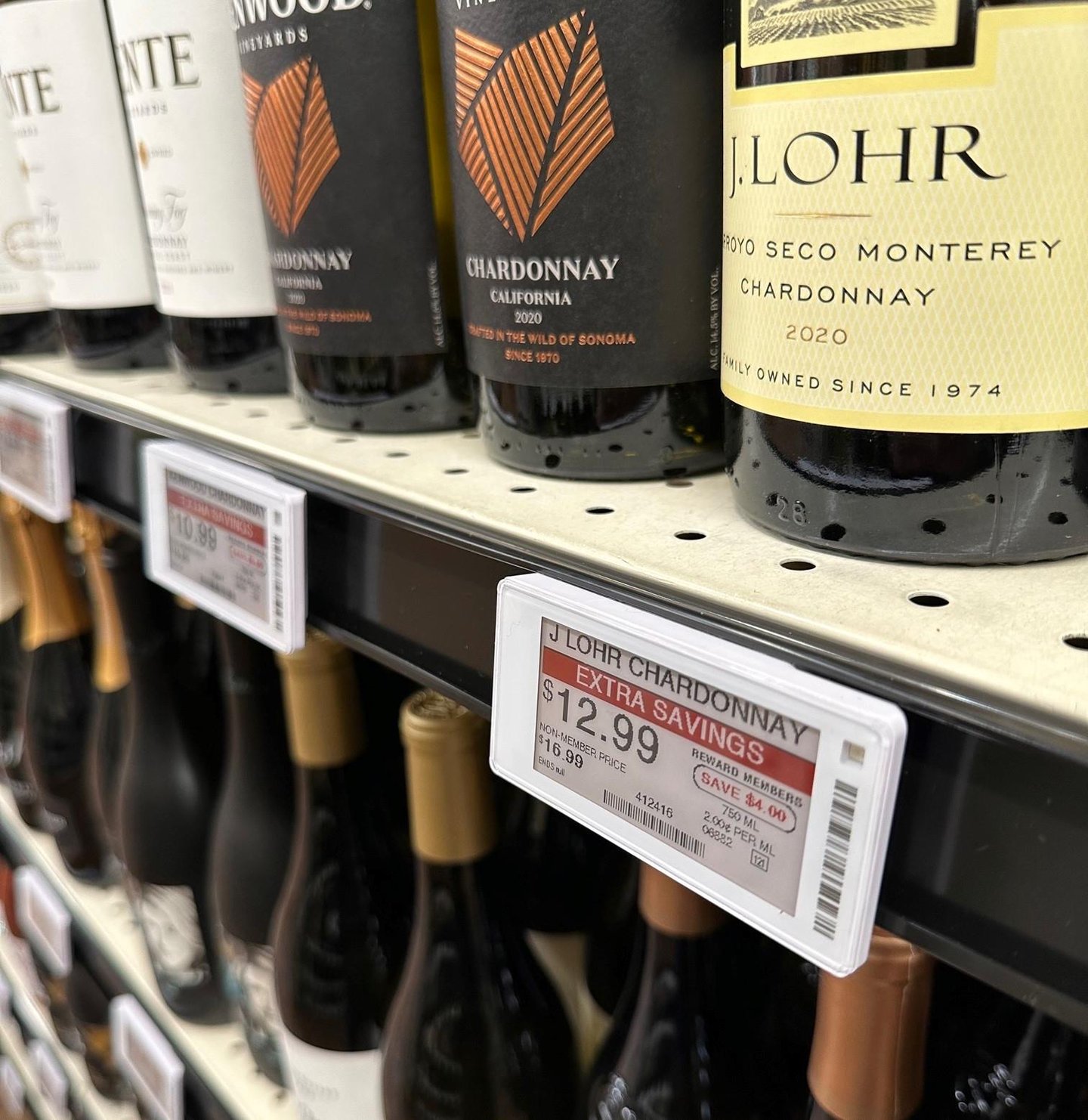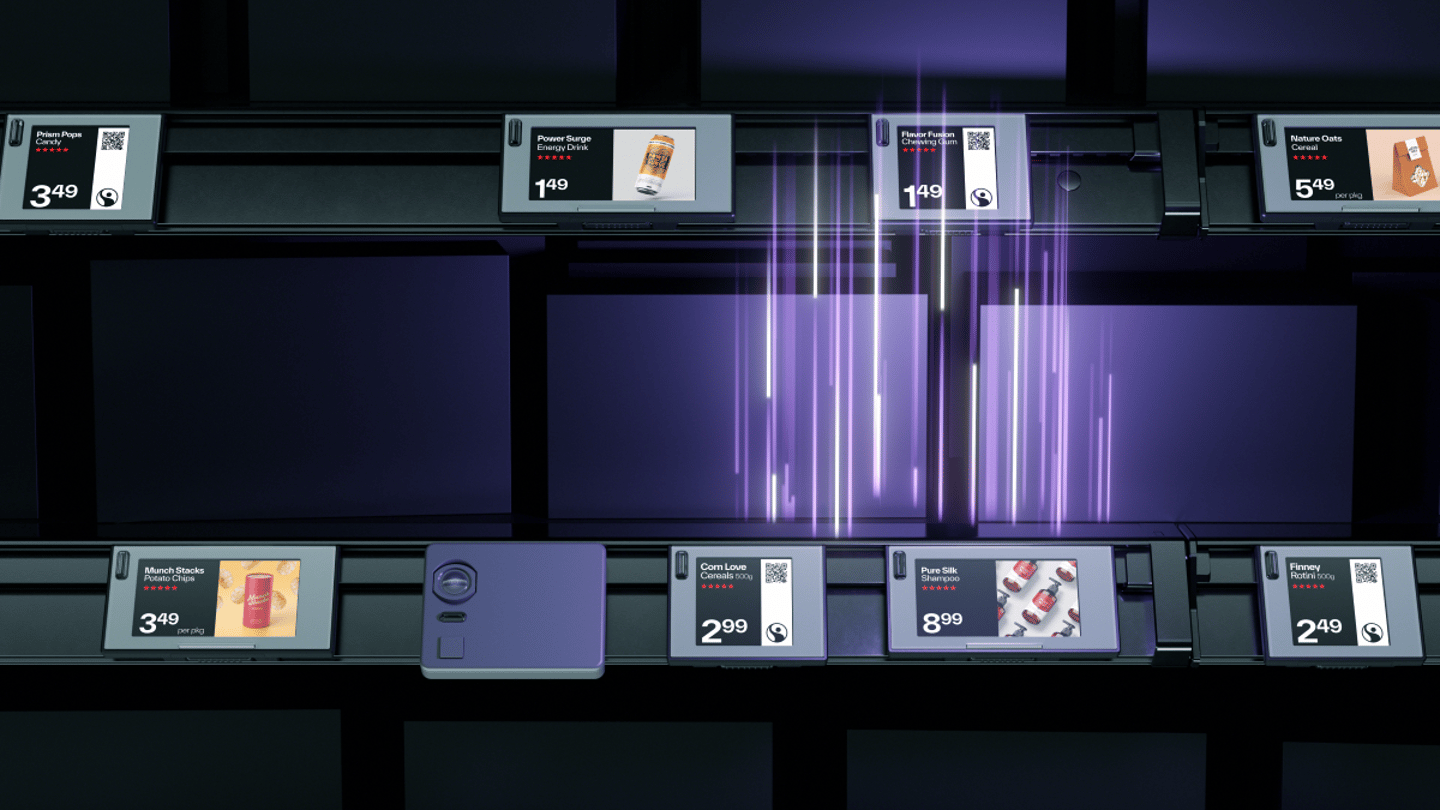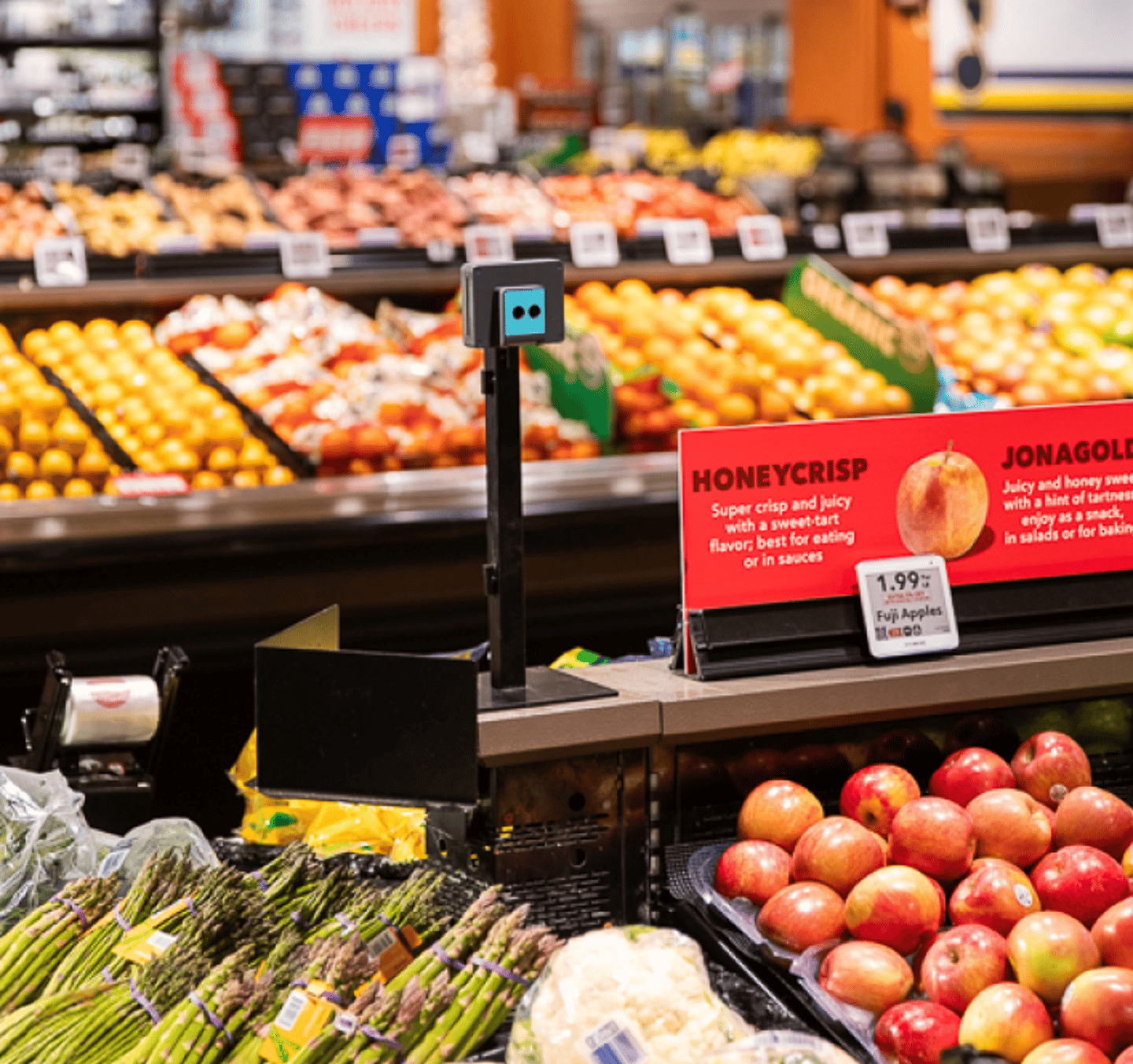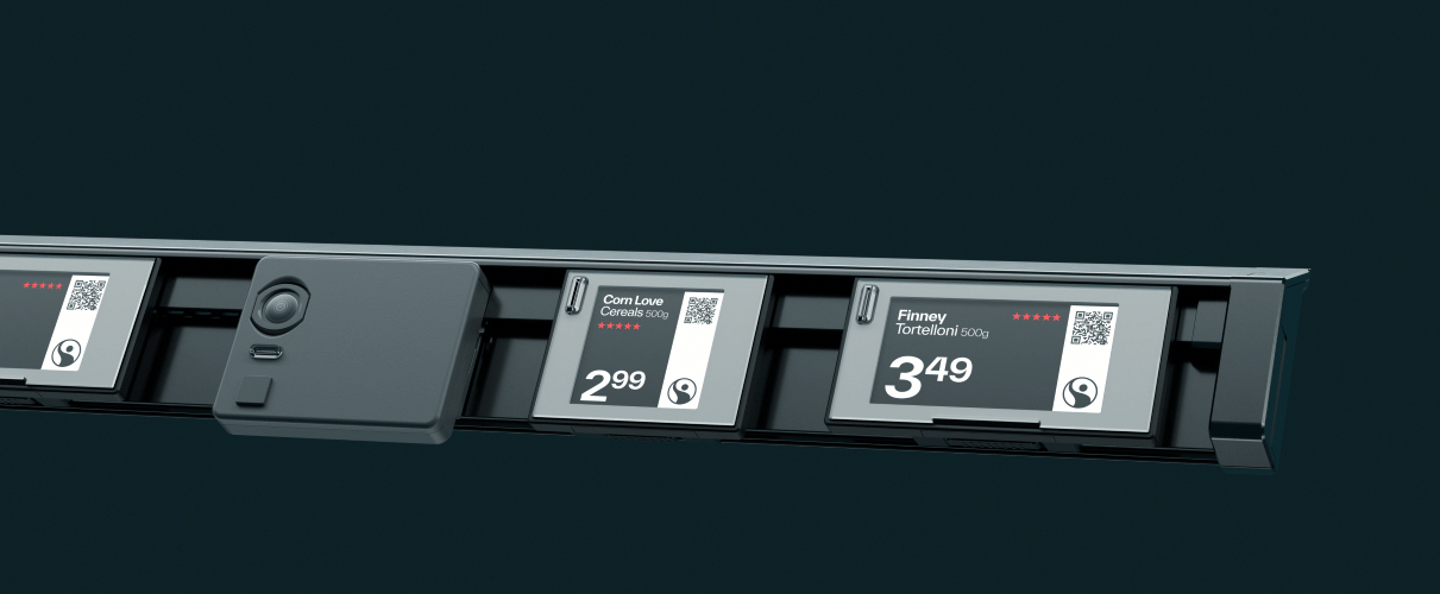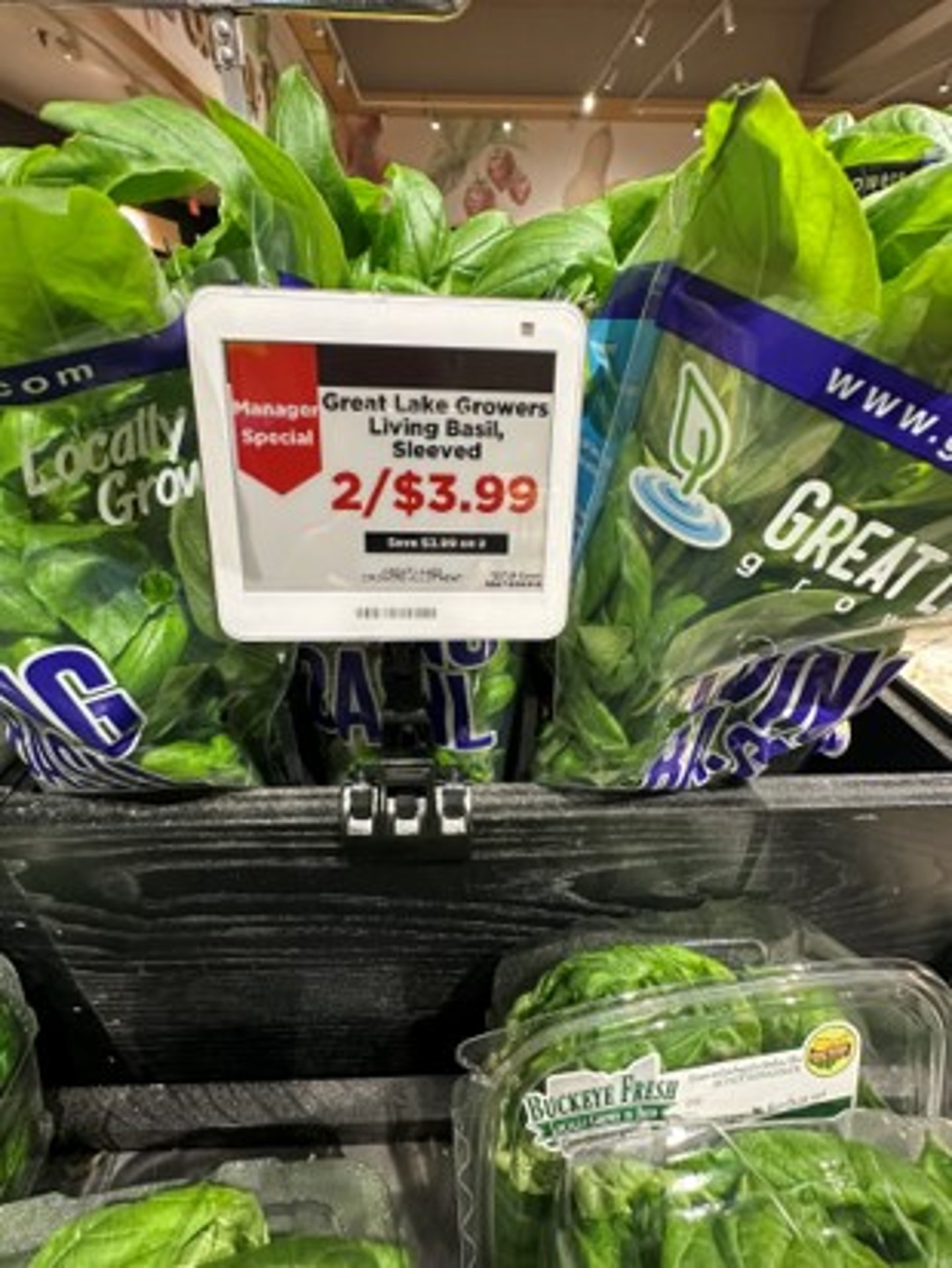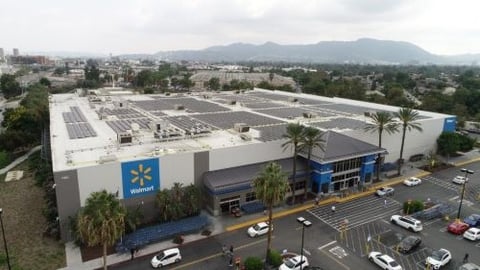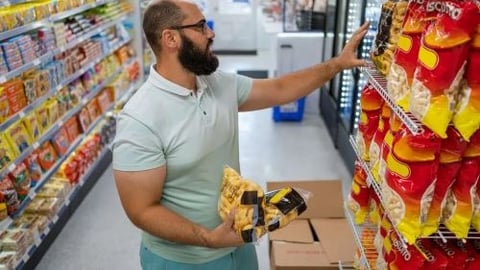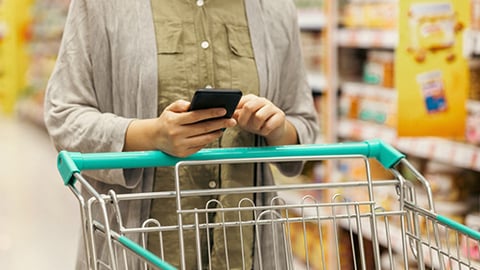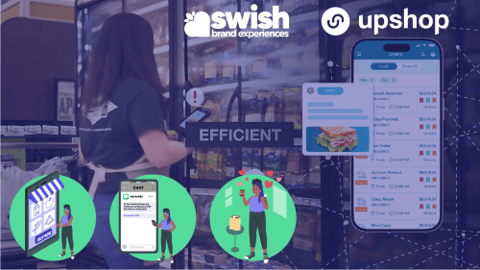Next-Level Shelf Technology
Key Takeaways
- AI- and computer vision-powered solutions to create a new level of personalization and customer experience, as well as a point of differentiation for grocers.
- ESLs eliminate the need for associates to physically update pricing signage, allows retailers to react more quickly to inflation and competition, and reduce waste.
- Shelf technology holds the promise of adding visibility into stores.
As the use of technology in grocery retail has proliferated, so, too, have its applications and physical presence within brick-and-mortar stores. While shelf-edge technology is one of the most obvious examples of this new omnipresent technology revolution, it’s also creating a wide range of in-store efficiencies that shouldn’t be ignored.
What started 20 to 25 years ago as simple digital labels on the shelf edge has evolved into AI- and computer vision-powered solutions that promise to create a new level of personalization and customer experience, as well as a point of differentiation that grocers often desperately need in today’s ever-changing grocery landscape.
Electronic Shelf Labels Come of Age
The adoption of electronic shelf labels (ESLs) has grown by leaps and bounds in recent years, thanks in part to major advancements in technology over the past two decades. According to Tighe Renner, a member of the new business development team with Bridgeton, Mo.-based Hussmann Corp.’s Aperion division, early ESLs could only show prices like an alarm clock display, but today they’re fully customizable, with up to seven colors.
“This allows retailers to effectively transform their current paper pricing and marketing programs into the digital world,” Renner explains. “An even bigger factor with the technology is the advancements in powering the devices. The life of the devices far exceeds the payback period for the solution.”
Continues Renner: “There has been a significant reduction in the amount of hardware needed at a store location, and most solution offerings in the market now are cloud-based platforms. Because of the graphical displays, integrations and other ESL features, there are more use cases now than there ever has been. It is no longer limited to a paper and labor equation on the ROI, and retailers can execute other uses, which drives an ROI to a period more palatable to them.”
While one of the most obvious retailer benefits of using ESLs is the labor reallocation afforded by associates no longer needing to physically update pricing signage, another benefit is the ability to react more quickly to inflation and competition, as well as being able to change fresh product pricing more quickly to reduce waste.
[RELATED: Special Report - Envisioning the Store of the Future]
Aperion’s ESL solution is a battery-operated device with a life of more than 10 years that communicates via radio technology and updates pricing based on data received from the retailer.
“We have solutions for all areas of retail and typically implement all four walls of a store,” Renner says. “Most retailers we have worked with have replaced more than 95% of the paper in their store in all departments, including product, meat, service cases, center store, health and beauty, and frozen.”
Advanced Connectivity
VusionGroup’s next-generation shelf technology, dubbed EdgeSense, combines smart rails, battery-less digital displays with enhanced performance, and location-based services built on VusionOX and VusionCloud. According to Gayatri Sirure, the French company’s director of engineering, the solution improves in-store efficiency and inventory management while also accelerating in-store fulfilment capabilities and streamlining in-store processes.
EdgeSense offers real-time 3D geolocation and tracking for products; personalized in-store navigation for associates and shoppers, guided in-store fulfillment and replenishment, and personalized and contextual shopper interactions through geofencing. Thanks to the solution’s reliance on a Bluetooth Low Energy protocol, Sirure explains, EdgeSense can also connect to shoppers’ smartphones and detect where those shoppers are based on their shopper history, loyalty programs, what they’re interested in and more.
Sirure emphasizes the solution’s ability to help both customers and associates find products on store shelves through LED lights connected to shelf sensors. Where VusionGroup’s technology has rolled out at Walmart, for example, an associate can flash an LED light on the shelf tag using a mobile device, signaling where specific products are located.
VusionGroup’s Captana platform, meanwhile, provides automated shelf monitoring and gap scanning, and offers daily reports to grocers to help them streamline operations and reduce inventory management inefficiencies. The solution can help improve product assortment planning and replenishment while also enabling grocers to keep the products that their customers want available in-store and to offer relevant promotions.
Future-Proofing the Physical Store
Shelf technology has a particular way of digitizing brick-and-mortar stores and further marrying the digital and physical shopping journeys. It also holds the promise of adding visibility into stores – a major perk being touted by San Francisco-based Simbe Robotics in regard to its latest solution, Tally Spot.
The fixed sensor was created as an extension of Simbe’s autonomous item-scanning robot, Tally, and can aid grocers in managing stock levels and preventing shrinkage in high-turnover and high-risk areas. Available for wall power and with battery configurations, the sensor provides another layer of visibility by monitoring high-frequency areas of the store, including fresh produce, prepared foods, adult beverages, and OTC health and wellness. It can also be used to check the bottoms of baskets at checkout.
“Retailers are increasingly recognizing the critical role store intelligence plays in better serving their store teams and shoppers while simultaneously working to alleviate top industry challenges related to shrink, labor shortages, inflation and shifting consumer behaviors,” says Brad Bogolea, co-founder and CEO of Simbe. “Now more than ever, they need true visibility into every corner of their stores. Combining Tally and Tally Spot gives retailers an added layer of visibility that drives tremendous value across their organization, addressing today’s priorities while modernizing their operating models for tomorrow. The store of 2035 will rely on data insights at scale, supported by a mix of capture devices working together.”
As for that store of the future, Renner believes that there will be continued improvements in the power of ESLs and more widespread adoption in the U.S. market.
“I believe we will see all major food retailers deployed chainwide with the technology and creating more and more ways to drive value from the solution,” Renner says. “Beyond ESLs, I think we will also see an increased use with more digital displays throughout the store as companies figure out some of the power requirement challenges and make it easier to deploy these devices in the retail environment.”
VusionGroup’s Sirure is also looking forward to more mass adoption of shelf technology across the grocery ecosystem. She also believes that using the technology for location purposes is going to be critical and will unlock a lot of possibilities for both grocers and CPG manufacturers.
“I think there’s going to be more effort from an industry perspective to [use] this to get more personalized offers, to use location to guide people from one place to another in a store, and then use that valuable space you have two seconds before someone makes a decision, either for retail media or showing personalized content on the phone,” she explains.


